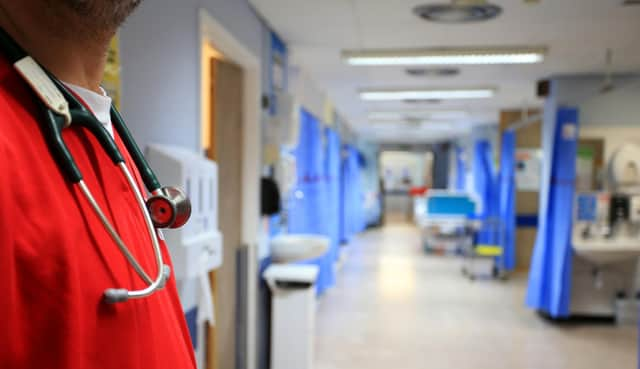Boston above England average for liver disease admissions


Boston had more hospital admissions for liver disease than the England average in the year to March 2022, figures show.
An alcohol awareness charity has said there is an "urgent need" for high quality treatment for alcohol-related conditions such as liver disease.
Advertisement
Hide AdAdvertisement
Hide AdFigures from the Office for Health Improvement and Disparities suggest there were 165 hospital admissions for liver disease in Boston last year – equivalent to 228 admissions for every 100,000 people.
This was higher than an average of 153 hospitalisations per 100,000 people across England.
National admission rates have increased by 22% in the year to 2021-22 compared to the year before – rising to 82,000 from 67,000 in 2020-21.
Admissions where the primary diagnosis was alcoholic liver disease also rose by 12% over the same period.
Advertisement
Hide AdAdvertisement
Hide AdLocal figures are not comparable to the previous year due to a change in how rates are calculated.
Andrew Misell, a director at the Alcohol Change UK charity, said the rise in alcohol-related health issues – including liver disease – are "both a tragedy and crisis".
"We must respond with not only treatment, but prevention," he said.
"We must stop people reaching the stage when they need to attend hospital."
Advertisement
Hide AdAdvertisement
Hide AdHe urged for the introduction of minimum-unit pricing on alcohol, alongside restrictions on how alcohol is advertised.
Generally, men are more likely to be hospitalised for liver disease.
Across both sexes, the East Midlands saw a hospitalisation rate of 172 for liver disease. The South East had the lowest rate of any region in England, at 127 hospitalisations per 100,000 people, while the North East had the highest, at 190.
For individuals, Mr Misell said: "the most effective way to prevent alcohol-related liver problems is to avoid alcohol."
Advertisement
Hide AdAdvertisement
Hide Ad"But if you do drink, then do so within the low-risk guidelines of no more than 14 units a week, which means about six pints of normal strength beer or one and a half bottles of wine per week, and spreading your intake over three days or more with a few alcohol-free days too," he advised.
A Department of Health and Social Care spokesperson said: “Identifying disease early in those at-risk and supporting them to stop drinking is key to halt or even reverse damage to the liver."
“That’s why it’s good news an increasing number of people are coming forward for alcohol risk assessments as part of the NHS health check," they added.
They said they are investing £532 million into drug and alcohol treatment services, and care teams in hospitals with the most alcohol-related hospital admissions.